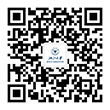Huang XQ, Zhang XY, Wang XR, Yu SY, Fang SH, Lu YB, Zhang WP, Wei EQ.Transforming growth factor β1-induced astrocyte migration is mediated in part by activating 5-lipoxygenase and cysteinyl leukotriene receptor 1.J Neuroinflammation. 2012 Jun 26;9:145. doi: 10.1186/1742-2094-9-145.
Source:
Department of Pharmacology, Key Laboratory of Medical Neurobiology of Ministry of Health of China, Zhejiang Province Key Laboratory of Neurobiology, Zhejiang University School of Medicine, 866 Yuhangtang Road, Hangzhou 310058, China.
Abstract:
BACKGROUND:
Transforming growth factor-β 1 (TGF-β 1) is an important regulator of cell migration and plays a role in the scarring response in injured brain. It is also reported that 5-lipoxygenase (5-LOX) and its products, cysteinyl leukotrienes (CysLTs, namely LTC?, LTD? and LTE?), as well as cysteinyl leukotriene receptor 1 (CysLT?R) are closely associated with astrocyte proliferation and glial scar formation after brain injury. However, how these molecules act on astrocyte migration, an initial step of the scarring response, is unknown. To clarify this, we determined the roles of 5-LOX and CysLT?R in TGF-β 1-induced astrocyte migration.
METHODS:
In primary cultures of rat astrocytes, the effects of TGF-β 1 and CysLT receptor agonists on migration and proliferation were assayed, and the expression of 5-LOX, CysLT receptors and TGF-β1 was detected. 5-LOX activation was analyzed by measuring its products (CysLTs) and applying its inhibitor. The role of CysLT?R was investigated by applying CysLT receptor antagonists and CysLT?R knockdown by small interfering RNA (siRNA). TGF-β 1 release was assayed as well.
RESULTS:
TGF-β 1-induced astrocyte migration was potentiated by LTD?, but attenuated by the 5-LOX inhibitor zileuton and the CysLT?R antagonist montelukast. The non-selective agonist LTD? at 0.1 to 10 nM also induced a mild migration; however, the selective agonist N-methyl-LTC? and the selective antagonist Bay cysLT2 for CysLT?R had no effects. Moreover, CysLT?R siRNA inhibited TGF-β 1- and LTD?-induced astrocyte migration by down-regulating the expression of this receptor. However, TGF-β 1 and LTD4 at various concentrations did not affect astrocyte proliferation 24 h after exposure. On the other hand, TGF-β 1 increased 5-LOX expression and the production of CysLTs, and up-regulated CysLT1R (not CysLT?R), while LTD4 and N-methyl-LTC4 did not affect TGF-β 1 expression and release.
CONCLUSIONS:
TGF-β 1-induced astrocyte migration is, at least in part, mediated by enhanced endogenous CysLTs through activating CysLT?R. These findings indicate that the interaction between the cytokine TGF-β 1 and the pro-inflammatory mediators CysLTs in the regulation of astrocyte function is relevant to glial scar formation.




 Location :
Location : 

